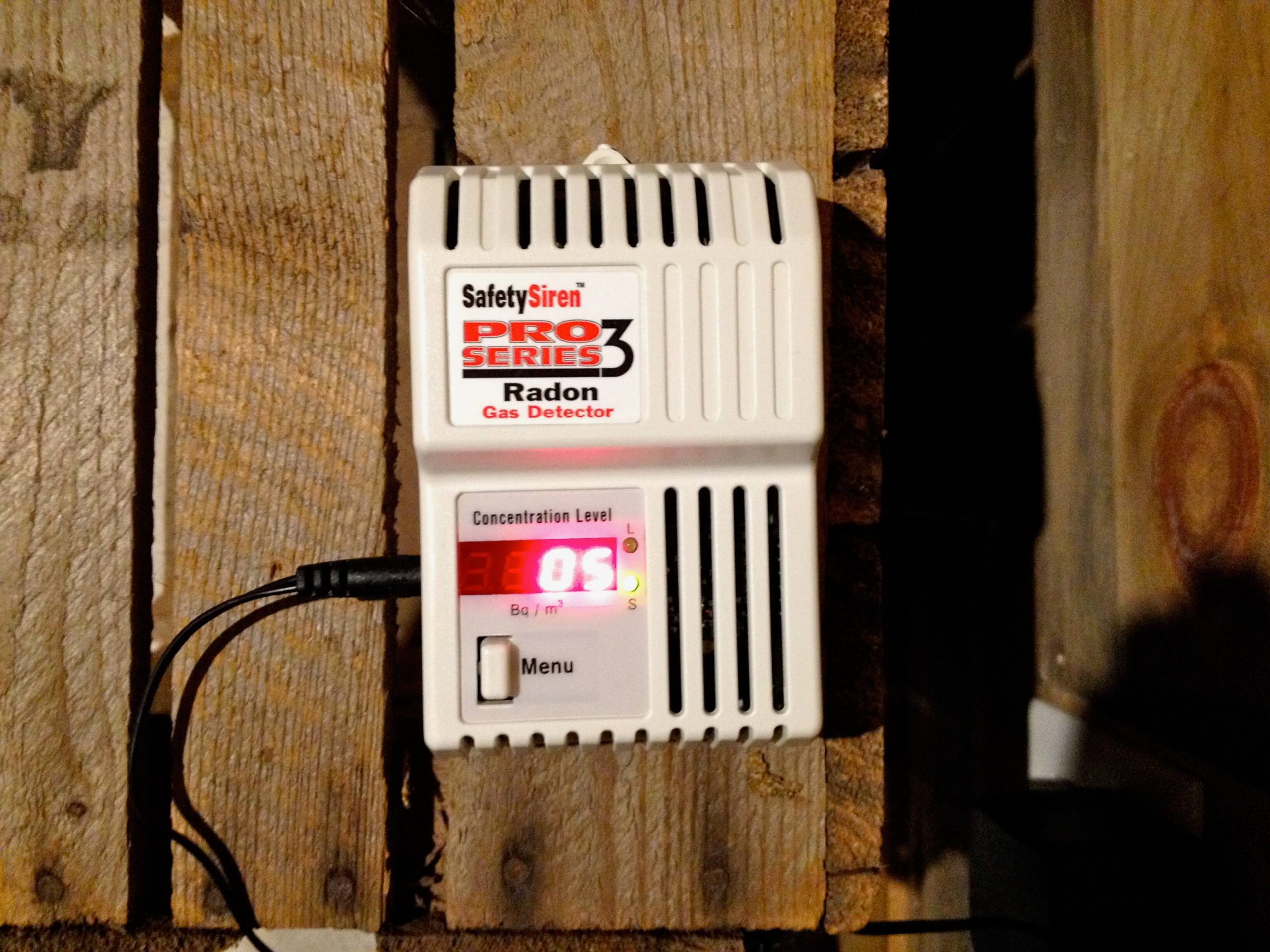Those of you who follow Endeavour’s work will know that we take indoor environment quality very seriously. Every material that comes into one of our buildings is carefully vetted for its chemical content, and all of our finishes are chosen to be non-toxic. We pride ourselves on making buildings that have the best possible indoor air and water quality for the occupants. This is an aspect of sustainable building that is all too often forgotten, or given minor consideration via the use of low-VOC paints or other small steps.
We have long been aware of the issue of radon gas; the presence of radon gas is an important consideration when trying to create excellent indoor environment quality. Health Canada says: “Radon is a colorless, odorless and tasteless gas formed by the natural breakdown of uranium in soil, rocks and water. It seeps from the ground, and small amounts of radon are always present in the air. If radon gas enters a closed space like a home, it can build to higher concentrations. Radon is radioactive, and potentially carcinogenic if enough of the gas builds up. It is estimated that radon exposure is responsible for about 10 per cent of lung cancer cases in Canada, second only to smoking. Health Canada estimates that 1,900 Canadians died in 2006 from lung cancer resulting from radon exposure.”
When building our Canada’s Greenest Home project, we certainly considered the issue of radon, but after consulting some radon concentration maps and the Peterborough City-County Health Unit’s radon measurements in area homes, we didn’t think that radon would be an issue for this home. Especially considering the heavy duty vapour barrier and careful air sealing we knew we’d be doing, we thought the risk was extremely low.
However, a radon test of the basement – an integral part of getting our LEED Platinum certification – showed that we had very high levels. A long term (3-month) test gave results of 485 Bq/m3 (Becquerel per cubic metre), well above the Canadian acceptable limit of 200 Bq/m3, which itself is above the World Health Organization‘s recommended limit of 100 Bq/m3.
Despite the dangers of long-term exposure to radon gas, it is not so difficult to remedy a high reading, especially in a well-built home with a good basement.
We bought a testing device ($150) and an extraction fan ($250) from Radon Detect. The testing device can give short term (48 hour) and long term readings of radon levels. When we first plugged it in, we had readings in the 370 Bq/m3 range.
The process for lowering the radon level is to drill a hole in the basement slab to extend a 4-inch pipe down into the gravel below. This pipe is then directed out of the building through the basement wall to exhaust outside. We chose to use a fan mounted outdoors, but there are indoor options as well.
Our readings on the meter dropped by over 100 Bq/m3 to 223 Bq/m3 by just installing the 4-inch pipe, prior to hooking the fan up to the power source! Within 48 hours of turning on the fan, the meter was reading just 5 Bq/m3, well below any level of concern.
What is of concern, however, is that all the available information indicated to us that the Peterborough area is considered quite safe from radon, with the Health Unit reporting that only 8% of homes tested higher than 200 Bq/m3. However, the operator of Radon Detect told us that every home he’s ever seen tested in Peterborough has been higher than that, and certainly our readings were very high. Since radon comes from radioactive decomposition of rock and soil, this would indicated that at least our closest neighbours likely have high radon levels, and that high levels may exist in many more homes than we were led to believe. We were double the already-high allowable limit from Health Canada. At least now we own the testing equipment to help others see if they have high levels of radon.







